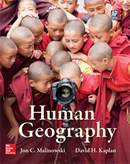1.
A) It was the same text written in three languages, making translations possible. B) Its forms of pictographs were easy to decipher because they looked just like what they meant. C) It is dark in color so the writing appears lighter and can be easily read. D) The size of the tablet revealed that writing did not have to be small to be understood. 2.
A) A comparison of French and Russian. B) A comparison of the forms of writing used on the Rosetta stone. C) A comparison of how people speak English in southern vs. northern Scotland. D) A comparison of language families like Indo-European with Altaic. 3.
A) language as it appears in common everyday speech. B) official language instruction of English in school. C) consistent language forms used in government. D) language seen as official and sacred like only using Arabic versions of the Koran. 4.
A) a local variation in language speech B) how many languages are related in a sub-family C) the most common language in an area for culture, business, and government D) when two languages mix together, say, near a port for trade purposes 5.
A) family structures are common and similar in different cultures. B) if many words are similar like this then they are related and have a common ancestor. C) many dialects are spoken within one language. D) syntax and morphology are greatly varied among these languages. 6.
A) about 6,800 languages. B) around 120 language families. C) areas like New Guinea where hundreds of languages still exist in close proximity. D) all of the above. 7.
A) erdkunde. B) gesundheit. C) sprachbund. D) randstat. 8.
A) both in one language family. B) being two separate language families. C) in one contiguous ‘sprachbund’ region. D) two minor dialects of one language. 9.
A) has over 1,000 languages. B) has about 250 separate languages. C) has about 10 languages, most only spoken by a couple million people. D) has 3 languages, the largest in total speakers being Mandarin Chinese. 10.
A) language divergence B) language convergence C) language isolation D) language serendipity





